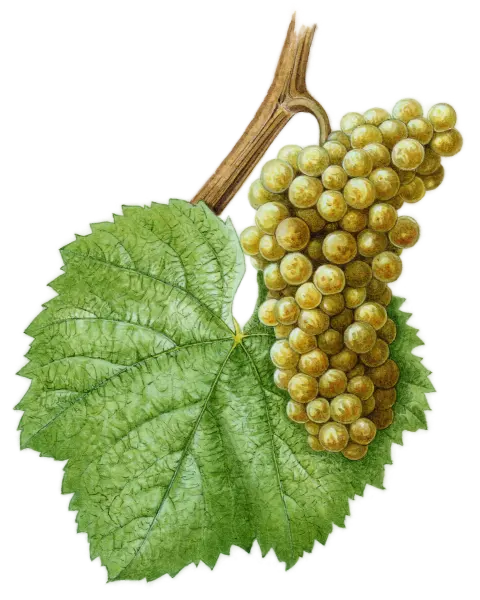Muscadet, Muscadet Sèvre-et-Maine, Muscadet Côtes de Grandlieu: Melon de Bourgogne is the sole grape variety behind these flagship appellations of the Nantais vineyards. Here, it produces dry white wines known for their freshness, minerality, and delicate aromas of citrus and white flowers.
The history of Melon de Bourgogne in the Loire Valley is closely tied to the severe frost of 1709. While much of the vineyard was destroyed, this hardy grape survived, leading to its spread in the region. Its resilience proved crucial again during the phylloxera crisis.
Genetic analysis confirms that Melon de Bourgogne is a cross between Pinot Noir and Gouais Blanc, just like Chardonnay. This lineage explains certain aromatic similarities between these two white grape varieties.
Melon de Bourgogne accounts for about 13% of the vineyard area in the Loire Valley, covering nearly 8,300 hectares. It is the region’s fourth most-planted grape variety, following Cabernet Franc, Sauvignon, and Chenin.


